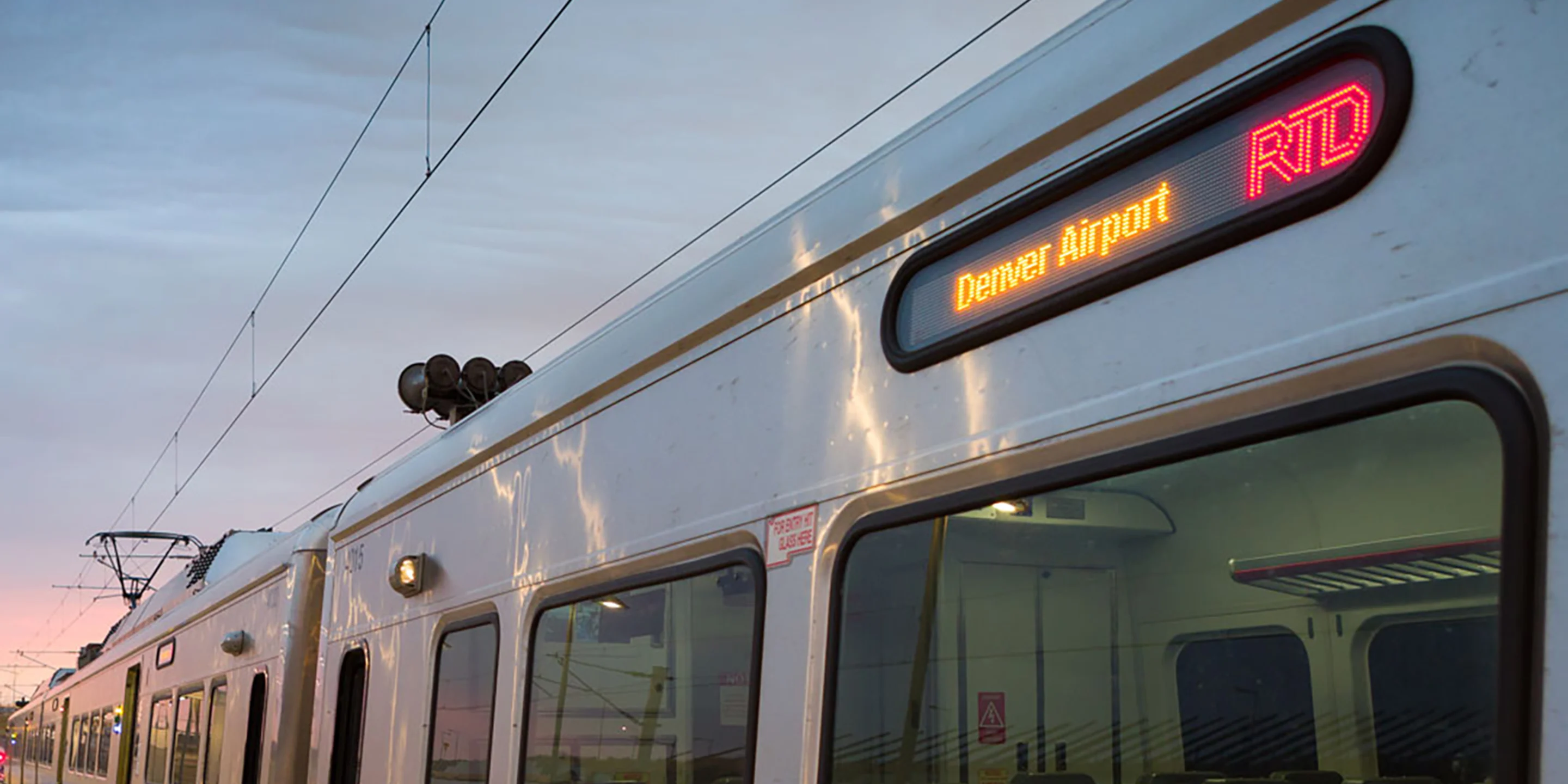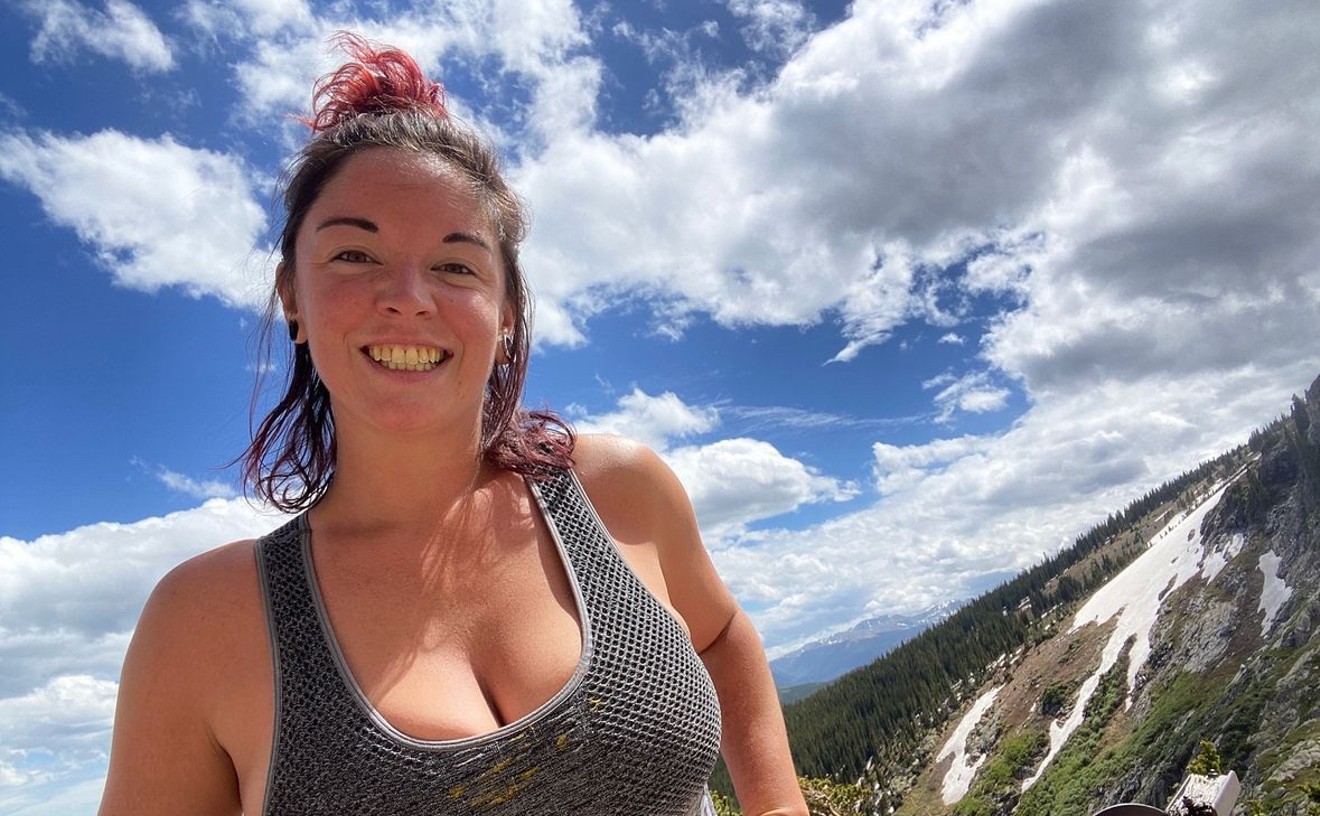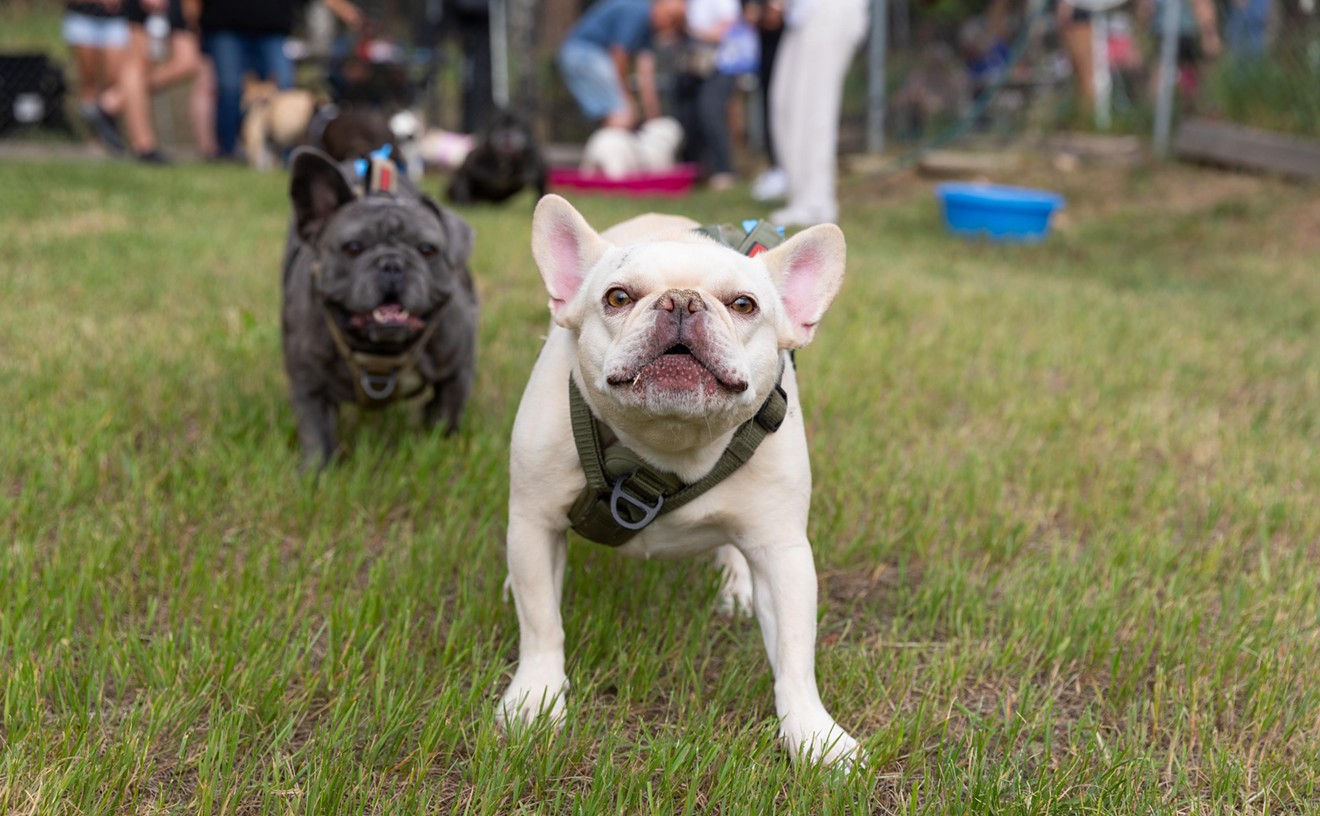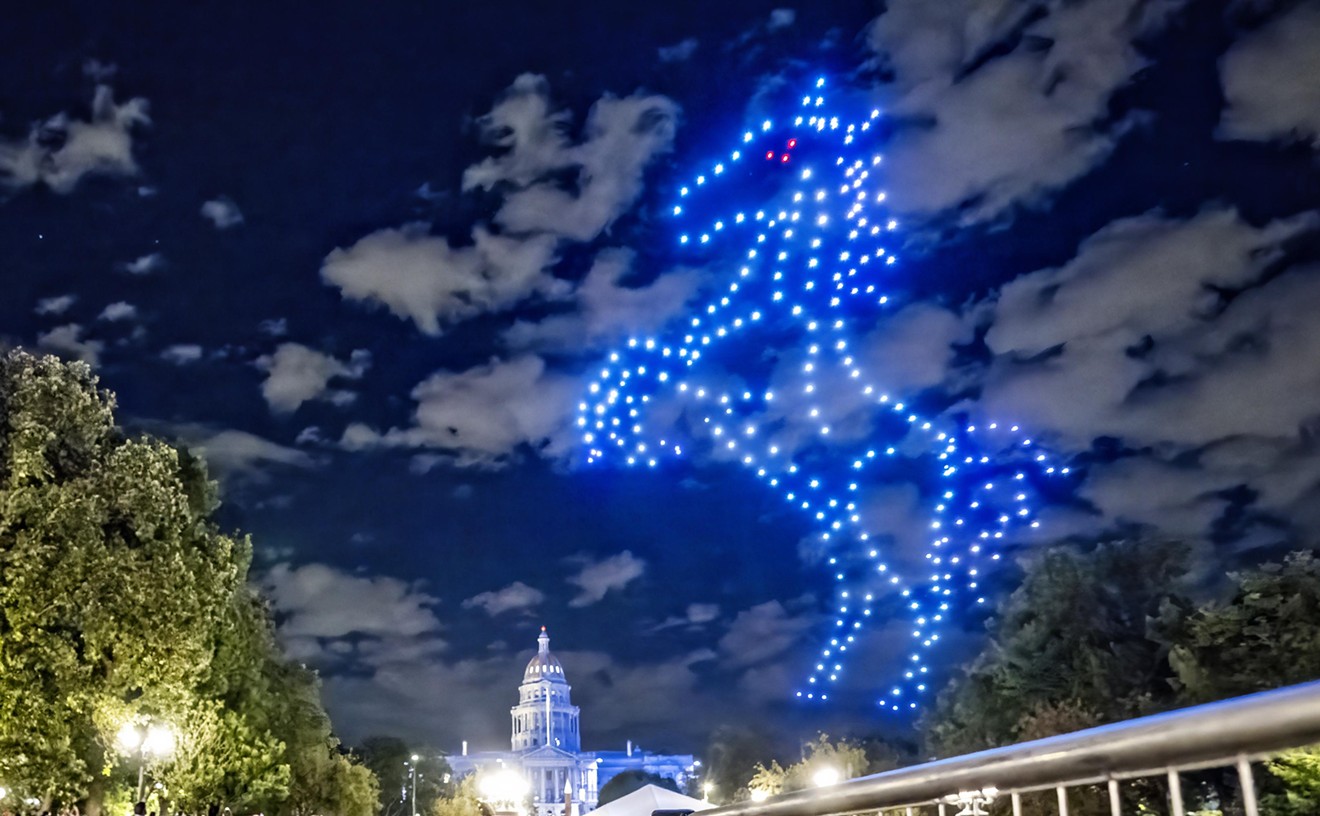Denver muralist and visual artist Jaime Molina is nearing the completion of his residency at the Children's Museum; he's the first of several artists who will be hosted at the museum this year. You've seen Molina's murals (which he often makes in collaboration with Pedro Barrios and Joseph Martinez as the Palabros) on the walls of Crema Coffee Shop, Rebel Restaurant and the Center for Visual Art, to name just a few. But for the past three months, Molina has partnered with a different artistic crew: young children up to the age of eight.
"By engaging with a working artist in the midst of their process, kids see that there is not one way to be an artist, and that being a professional artist is a real thing," explains Lares Feliciano, who's coordinating the residency program for the museum. "Our goals with this program are to make emerging artists’ work more accessible to the public, to provide new avenues of art exploration for our guests, and to connect young children to the power of art-making and art as an expression of identity, experience and community."
In advance of the open-studio event the museum will host on Wednesday, March 30, we talked with Jaime Molina about the museum residency, his murals and more.
Westword: How do you balance working with kids and creating your own work?
Jaime Molina: By trying to come up with projects that are interesting that aren’t just kids' stuff, like finger painting. Coming up with an art project that can encompass different ages, like a two-year-old, a seven-year-old, an eight-year-old. Its pretty tricky to find: You know the materials in art are maybe not toxic, but they’re not kid-friendly; they’ll stain the clothes, and kids get paint everywhere. Or trying to come up with a process that the kids can be successful at in a short amount of time, and have it be like an actual legitimate art experience. Like I said, you have two-year-olds just painting all over their faces, or kids just getting paint everywhere. So, you know, it has to be kind of friendly.
Were you able to capture the kids' input?
I think so. What I’ve been doing so far is, I made some panels, took them down and kind of set them up on these stands. I do a lot of murals around town, so I thought it’d be kind of fun to bring that inside. I’ve been drawing an outline of everything; one week it was a city scene, the last time it was like a garden – bugs, plants and lettuce and stuff. So for the kids, it's kind of like black and white, and the kids can come in and help me fill it in, or if they want to paint their own thing to go with the scene: "You know what we’re doing, what would you expect to find in a garden, in a city?"
That’s one component, and I’ve also started to build some forms to make an environment out of the studio. We just painted this cloud the other day; I built this cloud out of cardboard. And then the kids came in and helped me paint it, and I’m going to hang it up. And every week, in combination with the mural, we have little things so they can help me create this environment. It’s a beautiful studio, it’s a beautiful space, but I thought it’d be fun to add some energy to it.
How do the kids respond to creating these scenes?
It can be a little chaotic, so I haven’t had much time for feedback. It’s a little hit-and-run — they come in, they paint (some will take more time than others), and then it's on to the next exhibit. I haven’t really had a chance to talk to them or the parents to see what they got out of it. But it's definitely like everybody’s different, and there have been some kids who have done stuff that has given me ideas for this project and for other things. One kid, he kind of painted on a piece of paper and then folded it up and then folded it open – it was for the garden scene – and it was this Rorschach-looking blob. But it kind of looked like a butterfly, so he went and smashed it on the panel, on the painting, to make a stamp of the butterfly.
It's really cool: There have been a lot of innovative things that the kids come up with themselves, and some with their parents. That kind of stuff is exciting. I have my own idea, and it's exciting to see another take on it.
Did you spawn any young muralists during your residency?
I hope so. There was one little kid who was drawing on a Saturday when I was working on my piece...and I saw he was so into drawing and asking me a lot of questions about drawing, and he was maybe six. And he was like, "I can draw characters, too." And my thought was, "What you got?" And he draws this little guy that he draws a lot, and then he drew a little a Snoopy on there for me. And I could tell he really liked to draw. Then his dad came up to me and mentioned [his kid] has a notebook at school where he can draw, because it helps him focus when he doodles. So his teachers are okay with him doing that so he can focus and stay on task — and that is totally how I was when I was a kid. All of my notebooks were totally covered in doodles.
So the whole point of the residency — and what I like about it — is removing that mystique about art and artists, getting kids to have an early experience with an actual artist, and then it's not like some mysterious or highbrow thing.
What about yourself, how did you get into painting murals?
I always drew when I was little, and out of college, I guess, I started painting. Maybe three or four years ago, I started painting murals when I lived down in Argentina. Just like everywhere, you can go do murals pretty easily. You don’t need to get permission from the city, apply for a permit and stuff. When there’s some crappy wall with a bunch of graffiti, you can knock on the door. And if it doesn’t belong to anybody, you can just go paint it, and nobody’s going to complain, because you're just making it better.
Because it was so accessible, it looked really fun and I did it, really fell in love with it. I have been doing murals ever since.
How is mural culture different in Denver than in Argentina?
I'd say RiNo is kind of a similar vibe, just because there's so much of it, and it's very vibrant and everywhere. But in general, [Argentinians] have a pretty deep history of statements on the streets. Historically, there's been a lot of political graffiti and you still see that everywhere, and that's kind of the roots of that kind of expression. And then there was this huge explosion after their financial crisis in 2000 or 2001, when their economy totally fell apart. And things got real bad, you know, and a lot of the artists down there, as a response to that negativity or somberness, they started painting these bright, colorful pieces on the streets, to give people some joy. There was probably some stuff before that, but that's when it really took off. Seeing that was really inspiring, and I wanted to bring some of that back.
Visit Jaime Molina in his studio at the Children's Museum between 11 a.m. and 2 p.m. on Wednesday, March 30, and follow artists Nicole Banowetz, Wes Sam-Bruce, Ajean Ryan as they continue the museum's residency program through the year.
[
{
"name": "Air - MediumRectangle - Inline Content - Mobile Display Size",
"component": "12017618",
"insertPoint": "2",
"requiredCountToDisplay": "2",
"watchElement": ".fdn-content-body",
"astAdList": [
{
"adType": "rectangle",
"displayTargets": "mobile"
}
]
},{
"name": "Editor Picks",
"component": "17242653",
"insertPoint": "4",
"requiredCountToDisplay": "1",
"watchElement": ".fdn-content-body",
"astAdList": [
{
"adType": "rectangle",
"displayTargets": "desktop|tablet"
},{
"adType": "rectangle",
"displayTargets": "desktop|tablet|mobile"
}
]
},{
"name": "Inline Links",
"component": "18838239",
"insertPoint": "8th",
"startingPoint": 8,
"requiredCountToDisplay": "7",
"maxInsertions": 25
},{
"name": "Air - MediumRectangle - Combo - Inline Content",
"component": "17261320",
"insertPoint": "8th",
"startingPoint": 8,
"requiredCountToDisplay": "7",
"maxInsertions": 25,
"watchElement": ".fdn-content-body",
"astAdList": [
{
"adType": "rectangle",
"displayTargets": "desktop|tablet"
},{
"adType": "rectangle",
"displayTargets": "desktop|tablet|mobile"
}
]
},{
"name": "Inline Links",
"component": "18838239",
"insertPoint": "8th",
"startingPoint": 12,
"requiredCountToDisplay": "11",
"maxInsertions": 25
},{
"name": "Air - Leaderboard Tower - Combo - Inline Content",
"component": "17261321",
"insertPoint": "8th",
"startingPoint": 12,
"requiredCountToDisplay": "11",
"maxInsertions": 25,
"watchElement": ".fdn-content-body",
"astAdList": [
{
"adType": "leaderboardInlineContent",
"displayTargets": "desktop|tablet"
},{
"adType": "tower",
"displayTargets": "mobile"
}
]
}
]










